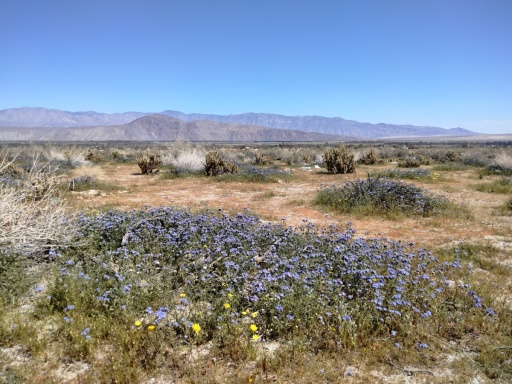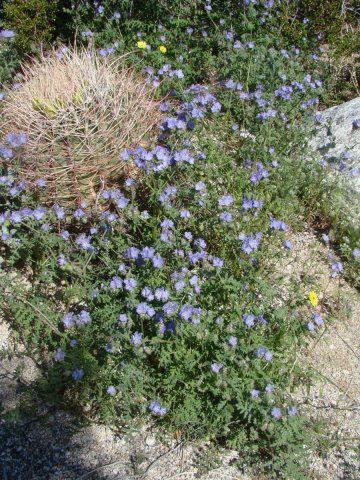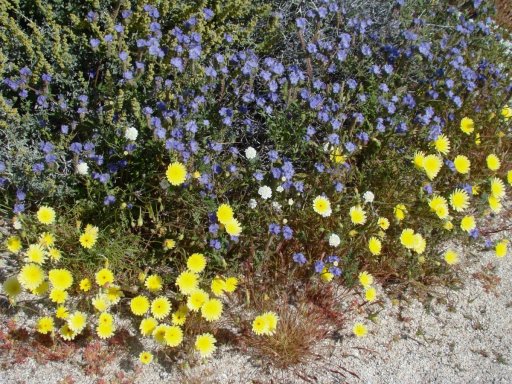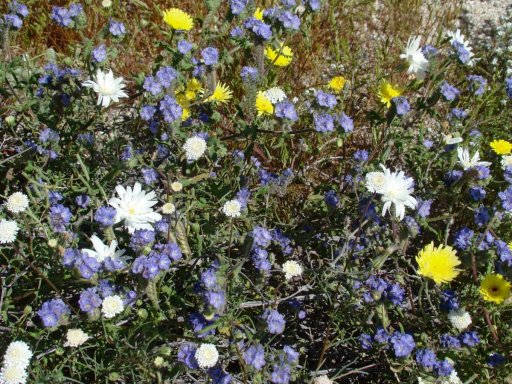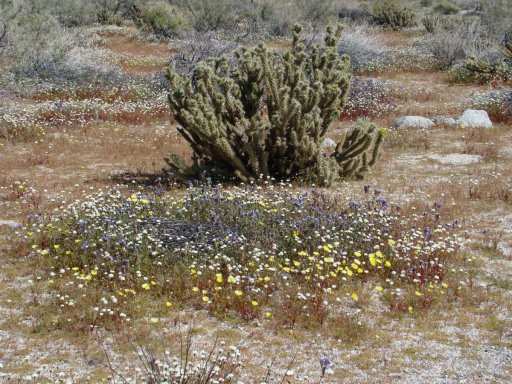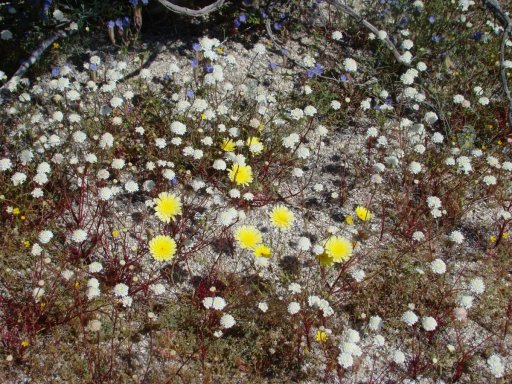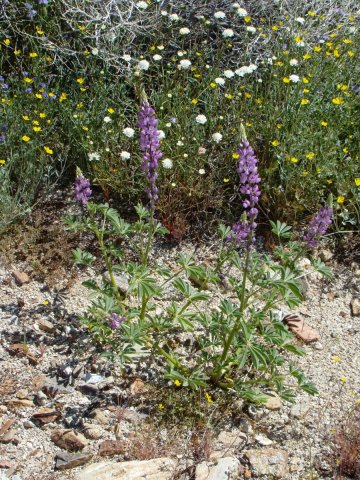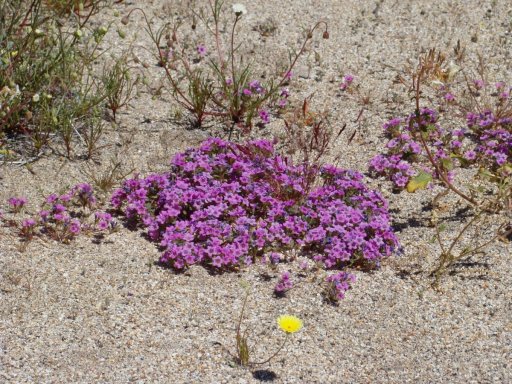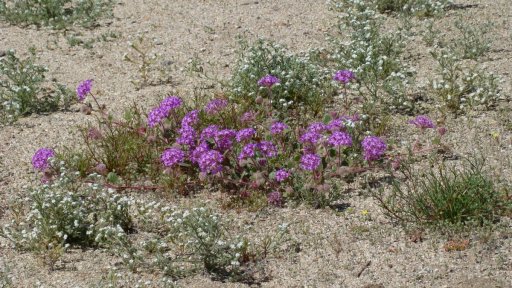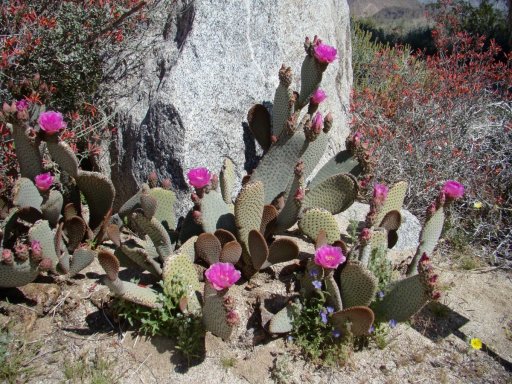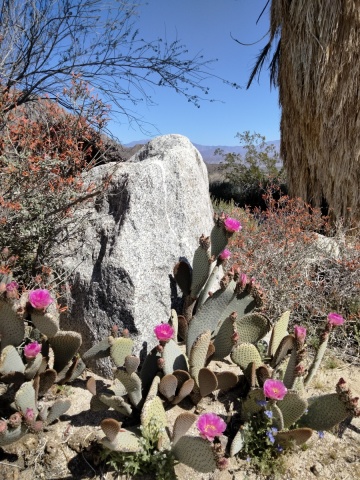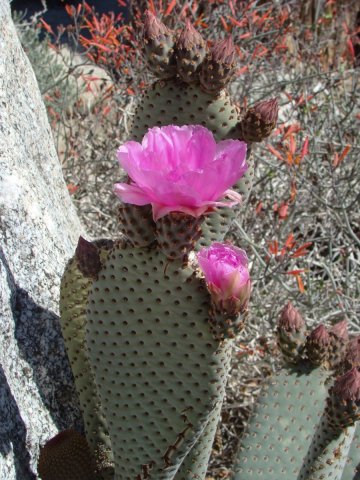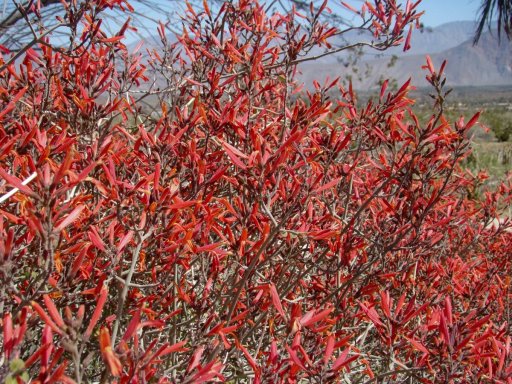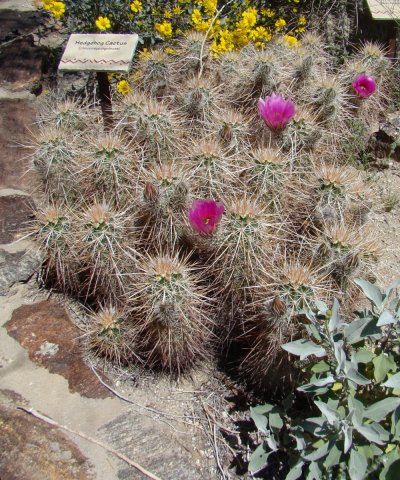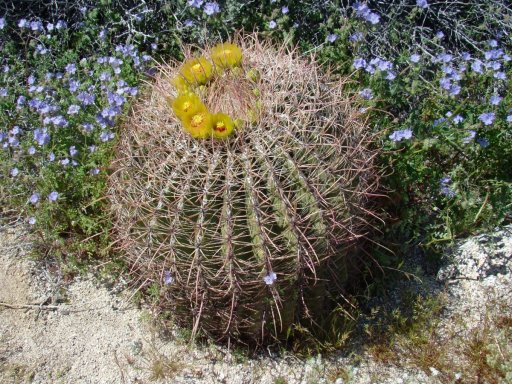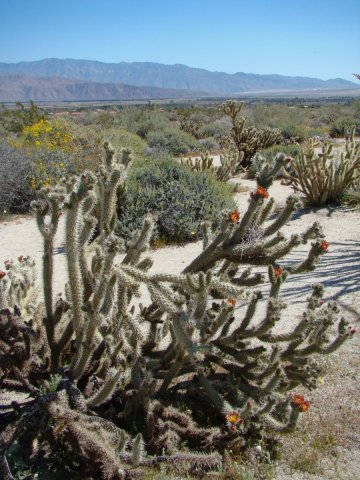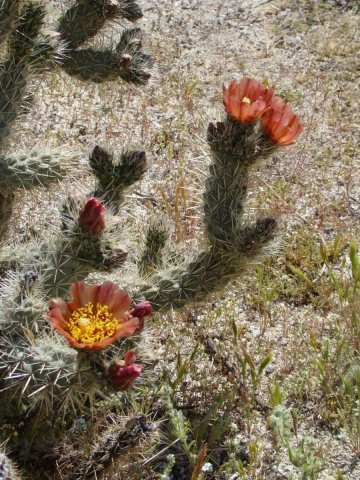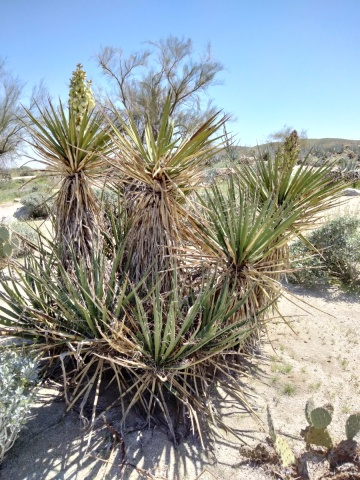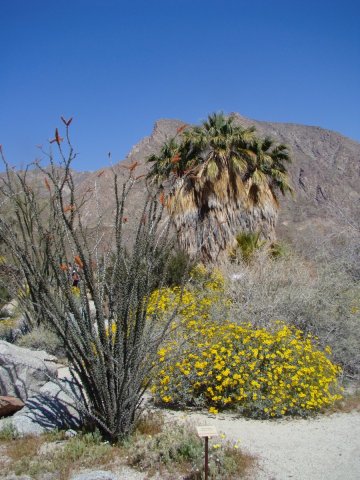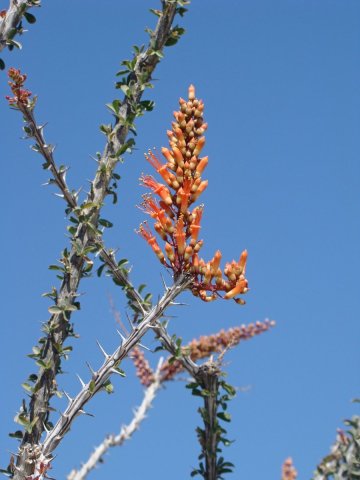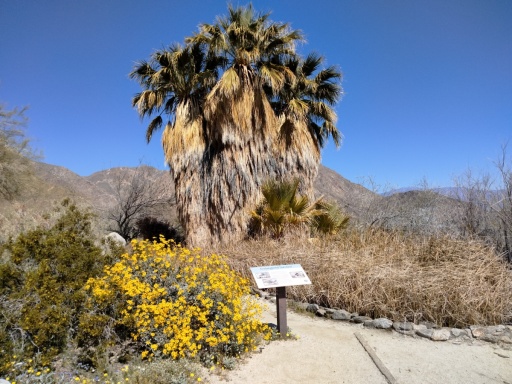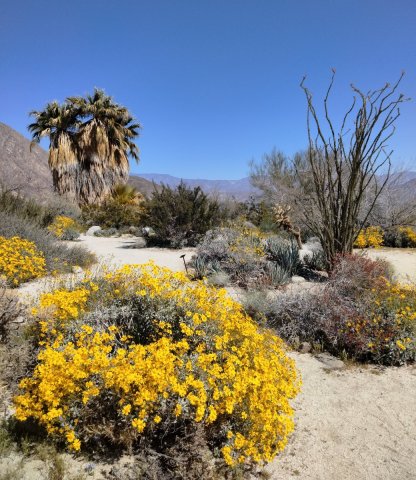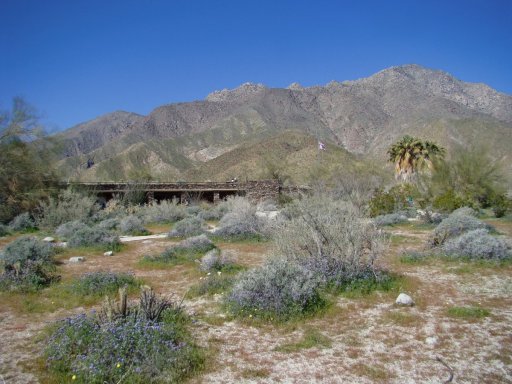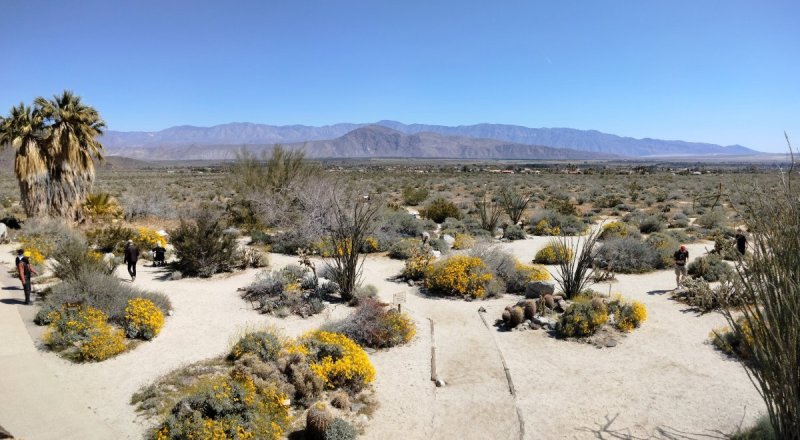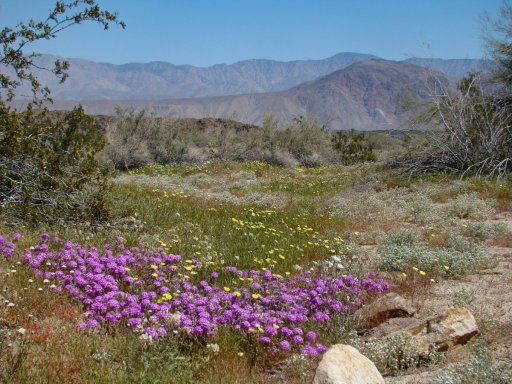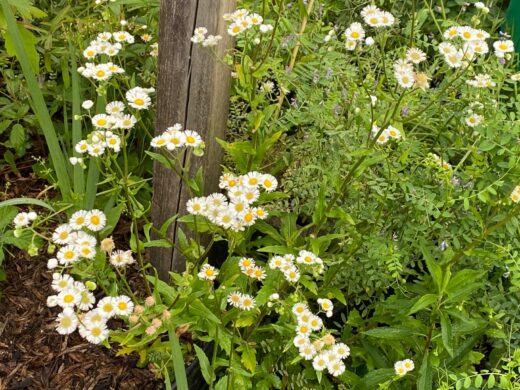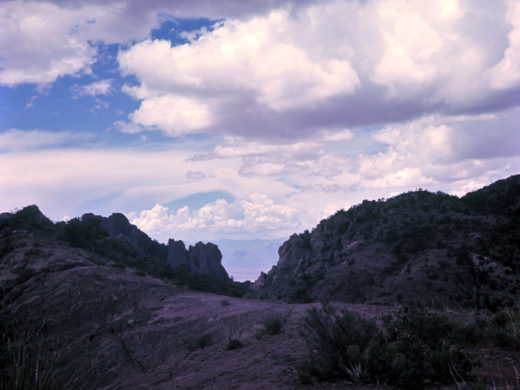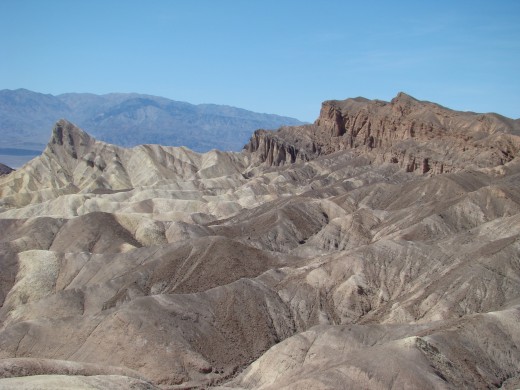Springtime in Anza-Borrego Desert
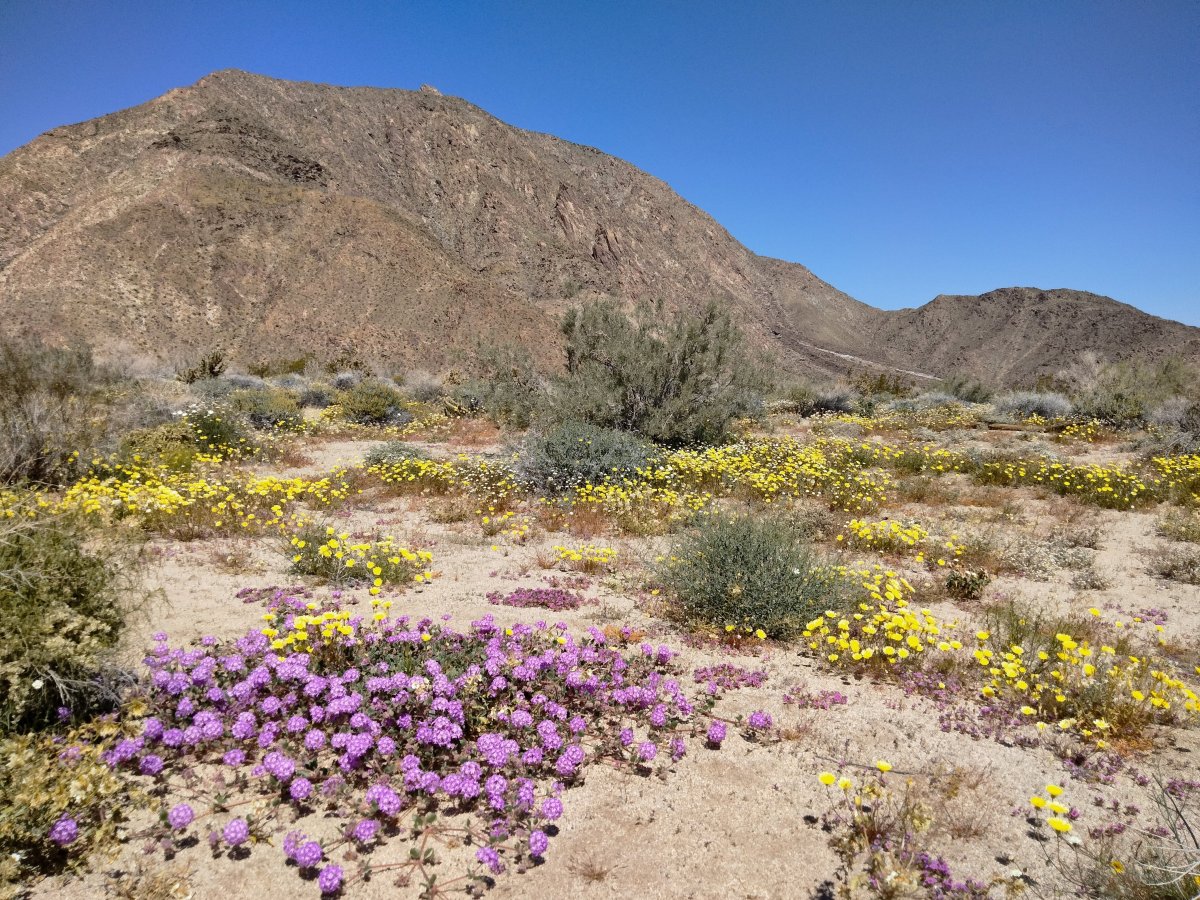
In spring wildflowers bloom in the Anza-Borrego Desert State Park making a colorful contrast to the rugged mountains and bleak desert. The park is the largest state park in California and is located about 90 miles from San Diego. When and how much bloom there is depends on the amount of rain, warmer temperatures and the timing of both. This year the area had a higher rainfall than average so I decided to check it out.
I went to the Anza-Borrego Desert State Park Visitor Center which is near the town of Borrego Springs, California. I was greeted with these wildflowers with mountains in the distance.
At the Visitor Center there are some paths and a nature trail where one can walk among the plants.
Here are yellow Desert Dandelion (Malacothrix glabrata), blue Wild Heliotrope (Phacelia Distans), and a few white Fremont’s Pincushion (Chaenactis fremontii).
A closer view of these wildflowers which are all annuals. Desert Dandelion has fragrant, daisy-like flowers which are usually in shades of yellow but are occasionally white. At the start of blooming flowers can have a red button in the center of the flower head. The Wild Heliotrope flower is usually blue but may be white or varying shades of lavender or purple. Its funnel or bell shaped flower has five lobes and at the center are five stamens.
The flowers were often seen in clusters like these.
A closer view of one of the clusters. The Fremont’s Pincushion flowers are white or very light pink and have a daisy or dandelion-like appearance. The plant is a food source for desert tortoises.
The purple flower is the Arizona Lupine (Lupinus arizonicus) which grows abundantly in Southern California, often by itself, away from other plants where it can spread out.
A nice clump of Purple Mat (Nama demissum) which can have rose to magenta-purplish flowers. The plant grows to several inches in height and sprawling to around 8 inches.
Desert Sand Verbena (Abronia villosa) grows close to the ground in creeping, spreading masses. The flowers clusters are lavender-pink and fragrant. The grayish green foliage has sticky glandular hairs.
There were also cactus plants like Beavertail Cactus (Opuntila basilaris). This cactus spreads across and close to the ground rather than upward. It lacks the usual pointy spines associated with cactus, but does have a microscopic form of thorns called glocchids which can be difficult to remove from the skin.
Another view of the Beavertail Cactus and a closer view of a flower.
On both sides of the Beavertail Cactus plants are Chuparosa (Justicia californica) shrubs. The red blossoms attract hummingbirds (Chuparosa is Spanish for hummingbird). The plant is native to the deserts of southern California, southern Arizona, and northern Mexico.
This cactus which has lots of spines but also has brilliantly colored flowers is Hedgehog Cactus (Echinocereus engelmannii Cactaceae). The cactus was named because its short, spiny stems resemble hedgehogs. It sometimes is called Engelmann’s Hedgehog Cactus for the botanist and physician George Engelmann. Hedgehog Cactus is native to the southwestern U.S. and northern Mexico, and grows in clumps of three to 60 stems per clump.
The California Barrel Cactus (Ferocactus cylindraceus) is pretty easy to identify as it usually is shaped like a barrel. These cactus plants have pretty yellow blooms and are also coverd by spines. The larger spines keep away thirsty desert creatures, and the smaller spines help prevent water loss and scorching by reflecting away some of the intense desert sunlight. The California Barrel Cactus is native to desert areas of the southwest U.S.
This cactus is Wolf’s cholla (Cylindropuntia wolfii). It’s flower color may vary from a beautiful red to deep maroon to bronze to yellow. This erect growing cactus can reach five feet in height. Wolf’s cholla is native to the Sonoran Desert region of southern California and the adjacent Baja California, Mexico.
The Mohave Yucca (Yucca schidigera) is a slow growing evergreen shrub or small tree and can grow up to about 15 feet tall. Like this one it often has a few clustered trunks and in spring white or cream colored, 12-18 inch flower stalks. The flower is pollinated by only a single species of Yucca Moth, and many of the flowers go unpollinated. Unlike most other members of this family, Mohave Yucca does not die after blooming so can be long-lived. The plant is found in parts of southern California, Nevada, Utah, and Arizona.
Another shrub is Ocotillo (Fouquieria splendens) which has thorny, wand-like, stems that rise and radiate from the crown. It is slow growing with the stems reaching up to 20 feet tall. Most of the time the stems are leafless, but after rain plants will be covered with narrow leaves about 2 inches long. The leaves remain on the plant until the soil dries out and they fall off, but the plants can grow and lose leaves four or five times in a year. The bright red flowers appear in spring, The plant’s name, ocotillo, means little torch in Spanish. The plant grows in desert regions from southeastern California to western Texas and south into Mexico.
The California Fan Palm (Washingtonia filifera) is the only palm tree native to western North America. They occur naturally in desert oases in isolated desert areas of southeastern California, southwestern Arizona, and northern Baja California, Mexico.
The plant with many yellow flowers is Brittlebush (Encelia farinosa) which is a common desert shrub of the southwestern United States and northern Mexico. Brittlebush is rounded and much-branched in form, can grow up to about 5 feet tall but is often shorter. During dry seasons the plant goes drought deciduous, shedding its foliage, relying on the water stored in its thick stems.
The visitor center, which was constructed in 1979, was built into the desert to conserve energy and to be unobtrusive. This also makes it visible only when one is near the front side. However if you are out enjoying the wildflowers the flag pole can be seen from quite a distance away so you can find your way back to it.
On the roof of the visitor center is a viewing area where there is a magnificent view of the desert.
One more look at the wildflowers, desert, and mountains. The weather pattern for this spring was a number of storms passing through with periods of sunshine between them. This resulted is some plants blooming normally, some plants that do not bloom every year got enough water to bloom, and some plants did not get enough sunshine between storms so either did not bloom or bloomed later.
I was pleased with both the amount of bloom and the different kinds of bloom I saw. All the pictures in this post and the others in the Anza-Borrego Desert Spring gallery were taken within a mile from the visitor center so I did not need to go far. However there are other things to do and see which sounds like a reason for a return trip to Anza-Borrego Desert State Park.
More information:
California Parks information on Anza-Borrego Desert State Park
Anza-Borrego Desert Natural History Association information on wildflowers and other things to do and see
